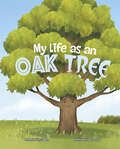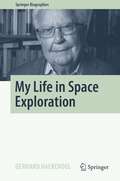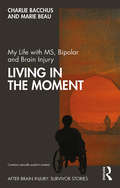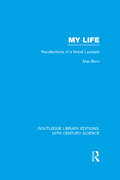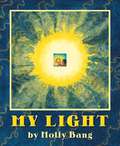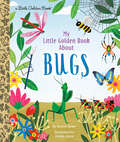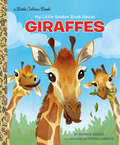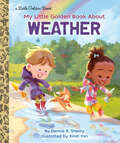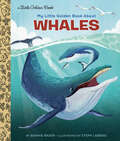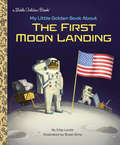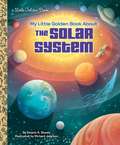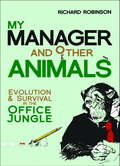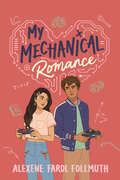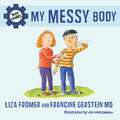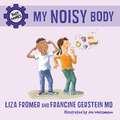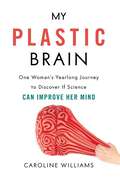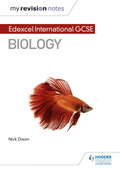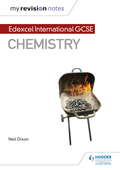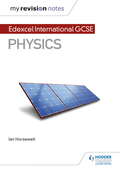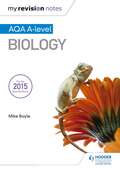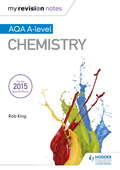- Table View
- List View
My Life as an Oak Tree (My Life Cycle)
by John SazaklisHi, there! I'm an oak tree. You might see me everywhere, but have you ever stopped to think about how I got there? Learn more about my life cycle and how I went from a tiny little acorn to a big, beautiful tree.
My Life in Space Exploration (Springer Biographies)
by Gerhard HaerendelThis book tells the inside story of Germany's first contributions to space research by experiments with artificial plasma clouds in space. In this autobiography, Gerhard Haerendel, former director at the Max Planck Institute for Extraterrestrial Physics, describes his 60 adventurous years in space research. The narrative of exciting events—covering 40 years of rocket and satellite work–is underpinned with accessible accounts of the actual physical phenomena and processes involved. The reader also learns about how the goals set by a visionary astrophysicist eventually led to one of Germany's first major contributions to space research by the creation of artificial comets in the solar wind.Haerendel's efforts also led to two further satellite programs, one in partnership with Sweden, focusing on the aurora borealis, the other, a national German endeavor, to explore the outer border of the magnetosphere. A further interesting chapter concerns his engagement in the evaluation and restructuring of eastern German Academy institutes after reunification.All readers interested in space research and its history will enjoy sharing the fascinating experiences and dramatic events that accompany the story throughout, even some spectacular failures relating to rocket campaigns.
My Life with MS, Bipolar and Brain Injury: Living in the Moment (After Brain Injury: Survivor Stories)
by Charlie Bacchus Marie BeauThis is the remarkable story of Charlie Bacchus, who was diagnosed with a severe case of viral encephalitis and later with multiple sclerosis and bipolar. This moving, funny, sometimes explicit book charts his life, including recollections of his childhood, the acceptance of his diagnoses and his determination to carry on living to the full. This book highlights many themes such as the loss of independence and the challenges of hidden disabilities and visible differences. Although the line between fantasy and reality is not always clear, Charlie’s loving personality and hypomania allow him to maintain supportive connections and adapt to his situation. Charlie’s account provides support for patients who have brain injury and their families. This will be of great interest to professionals working in neurology including occupational therapists, social workers and rehabilitation practitioners.
My Life: Recollections of a Nobel Laureate (Routledge Library Editions: 20th Century Science)
by Max BornIn this collection of informal reminiscences, first published in 1975, Max Born has written an extraordinarily vivid account of his life and work, originally intended for his family. Ranging from his time at the University of Göttingen, where Born had his first real motivation for a professional career in science, to the period in Berlin as professor extraordinary, when he and his wife became close friends of Einstein, these anecdotes and memories chart the "heroic age of physics" from the perspective of one of its leading characters. In 1954 Born was awarded the Nobel Prize in physics for his fundamental contributions to the great discovery of that cadre of superlative scientific minds – quantum theory. But his scientific research provides only one strand of this story. Born’s varied interests outside science led to many interesting experiences – some of historical importance insofar as they offer a glimpse into German society before and between the wars.
My Light
by Molly Garrett BangThe Caldecott Honor artist takes young readers on an incredible journey that follows the light of the sun as it is transformed into the energy that's used every day.
My Little Golden Book About Airplanes (Little Golden Book)
by Michael JoostenLittle pilots can learn all about exciting airplanes and famous aviators in this high-flying Little Golden Book!Climb aboard and soar the skies with this adventure-filled look at a subject all children are fascinated by: airplanes! Full of exciting illustrations, simple sentences, and unbelievable facts and stories about some of the most memorable aviators (the Wright brothers, Charles Lindberg, Bessie Coleman, Amelia Earhart) and airplanes (the Concorde, the B-2, the 747), My Little Golden Book About Airplanes is a celebration of the dreamers and doers of aviation.
My Little Golden Book About Bugs (Little Golden Book)
by Bonnie BaderThis nonfiction Little Golden Book is filled with amazing facts about bugs--perfect for preschoolers!Some creep and crawl, some fly and flutter--they're bugs! And kids are fascinated by them. This simple yet informative Little Golden Book introduces a variety of bugs to preschoolers. They'll love the colorful illustrations and the cool facts about ants, spiders, butterflies, beetles, stick bugs, honey bees, praying mantises, and many more. This is a book that young bug enthusiasts will want to look at again and again!
My Little Golden Book About Giraffes (Little Golden Book)
by Bonnie BaderLearn all about giraffes—the tallest land animals on Earth! This nonfiction Little Golden Book is filled with beautiful illustrations and amazing facts your little one will love.Learn all about giraffes—the tallest land animals on Earth! Preschoolers will enjoy discovering that baby giraffes are six feet tall at birth, their spotted patterns make every giraffe unique, and so much more. With colorful illustrations on each page, this Little Golden Book will help nuture their love of wildlife as they get to know these graceful giants!
My Little Golden Book About Weather (Little Golden Book)
by Dennis R. ShealyThis nonfiction Little Golden Book is about a common preschool subject--the weather!It's always perfect weather for reading! This nonfiction Little Golden Book introduces preschoolers to more than just rain, wind, and snow. Through engaging artwork and text, they'll learn about how the sun's energy causes daily weather conditions. They'll also learn about the four yearly seasons, how clouds are formed, what a meteorologist is, and so much more. It's a great "first book" to inspire young minds!
My Little Golden Book About Whales (Little Golden Book)
by Bonnie BaderThis nonfiction Little Golden Book is filled with amazing facts about whales and beautiful illustrations--perfect for preschoolers!Let your little one discover the wonderful world of whales! This informative Little Golden Book introduces little ones to these gentle giants with colorful illustrations and cool facts. How many kinds of whales are there? What do they eat? How do they communicate? Dive in and find out!
My Little Golden Book About the First Moon Landing (Little Golden Book)
by Charles LovittThe exciting story of the Apollo 11 mission!In this engaging Little Golden Book, preschoolers will enjoy the fascinating story behind what happened on July 20, 1969, when two human beings walked on the moon for the very first time. Little ones will learn about the rocket Saturn V, the command module Columbia, and of course the famous lunar lander Eagle, and how they each served to send astronauts into space. Kids will learn who the astronauts were and how they were chosen for the mission. And they'll hear Neil Armstrong's unforgettable words in his message back to Earth: "one giant leap for mankind." Fun facts about the astronauts' space suits and their work in space round out this exciting picture book.
My Little Golden Book About the Solar System (Little Golden Book)
by Dennis R. ShealyLittle Golden Books introduces your young reader to the solar system!This simple yet informative book brings our fascinating solar system to life for kids just learning how to read. They'll enjoy poring over the dramatic illustrations as they learn about planets, constellations, satellites, spacecraft, and more. Lively and up to date, this perfect "first book" will inspire little ones to search for shooting stars, constellations, and the Milky Way!
My Manager and Other Animals
by Dr Richard RobinsonDeep down, we're just like animals. Some of us are selfish like apes. Some are chaotic like ants. . . And somehow the two clash and coalesce in 'antagonistic harmony'. A fascinating look at the evolutionary psychology, instincts and tactics of the workplace.My Manager & Other Animals examines the evolutionary psychology of work, focusing on the office, workshop, corporation or government department, and the complex and fascinating evolutionary tactics that have developed to deal with working life.37 years ago Richard Dawkins wrote The Selfish Gene and it didn't take long for the business community to latch on to the 'selfish' part and adopt it as an industry standard. After all, it fitted in with the notion that, since we are all descended from apes, we should be like them: selfish, aggressive and competitive. More recently, astounding discoveries in human and animal behaviour (particularly ants) have shown that, in all animals, cooperation and altruism is more common than we think and more useful than we could imagine. It seems we contain an inner ape and an inner ant. How confusing; they seem like opposites, because co-operation means helping others, competition means swatting them. What are we, ape or ant? This book shows that ant and ape are both important. Co-operation without leadership is random, leadership without co-operation is slavery. The result of these two colliding is the mad mad mad world of work and life, lovingly described in the book.
My Mechanical Romance
by Alexene Farol FollmuthOpposites attract in this battle-robot-building YA romance from the NYT best-selling author of The Atlas Six. Bel would rather die than think about the future. College apps? You&’re funny. Extracurriculars? Not a chance. But when she accidentally reveals a talent for engineering at school, she&’s basically forced into joining the robotics club. Even worse? All the boys ignore Bel—and Neelam, the only other girl on the team, doesn't seem to like her either. Enter Mateo Luna, captain of the club, who recognizes Bel as a potential asset—until they start butting heads. Bel doesn&’t care about Nationals, while Teo cares too much. But as the nights of after-school work grow longer and longer, Bel and Teo realize they've made more than just a combat-ready robot for the championship: they&’ve made each other and the team better. Because girls do belong in STEM. In her YA debut, Alexene Farol Follmuth, author of The Atlas Six (under the penname Olivie Blake), explores both the challenges girls of color face in STEM and the vulnerability of first love with unfailing wit and honesty. With an adorable, opposites-attract romance at its center and lines that beg to be read aloud, My Mechanical Romance is swoonworthy perfection. A Junior Library Guild Gold Standard Selection
My Messy Body (Body Works)
by Liza Fromer Francine GersteinYoung children are full of questions about how their bodies work. With straightforward, easy-to-understand language and a playful attitude, Liza Fromer and Francine Gerstein MD have collaborated to create books packed with solid information about the intricacies of the human body. Their reassuring text describes the body&’s various systems and supplies parents and caregivers with answers that will help them provide the accurate, age-appropriate information young children need. My Messy Body is about the sometimes yucky functions of the body: why are vomit, puss, and snot sometimes good for us? and yes, pee and poo are also on the list!
My Noisy Body (Body Works)
by Liza Fromer Francine GersteinYoung children are full of questions about how their bodies work. With straightforward, easy-to-understand language and a playful attitude, Liza Fromer and Francine Gerstein MD have collaborated to create books packed with solid information about the intricacies of the human body. Their reassuring text describes the body&’s various systems and supplies parents and caregivers with answers that will help them provide the accurate, age-appropriate information young children need. My Noisy Body deals with the digestive system and the many noises it creates, from burps to stomach growls to farts. Why do we hiccup? Sneeze? Snore?
My Perfect Cabin
by Emmanuelle MardessonTake your little one on a journey around the world! Meet many people from different cultures and explore wonderful scenery across the planet.Follow Lucile on a globetrotting adventure as she searches for a place that she can call home. From tropical rainforest to the snowy Arctic, will she ever find her dream home? Come along with us and let&’s find out!Uncover the beauty of nature and our multicultural world with this stunning picture book for kids. It includes: • Twelve beautifully illustrated spreads to accompany the simple narrative text. • The large format makes it perfect for adults to share with their children. • Simple but enchanting text is ideal for reading aloud. Take a trip across the world with this children&’s nature book! Along the way discover where other people live, whether it is on a lake, at the top of a mountain or even inside an igloo.This informative children&’s geography book gives young readers a look at the environments other children live in and their traditions and cultures. This book provides parents with the support to approach topics like prejudice with stunning full-page illustrations and a simple but enchanting narrative. Showcasing the beautiful natural scenery that our incredible planet has to offer, My Cabin at the End of the World is perfect for parents who want to introduce their kids to the diversity of Earth&’s cultures.
My Plastic Brain: One Woman's Yearlong Journey to Discover If Science Can Improve Her Mind
by Caroline WilliamsUsing herself as a guinea pig, a science journalist explores "neuroplasticity" to find out whether she can make meaningful, lasting changes to the way her brain works. In books like THE HAPPINESS PROJECT, THE NO-SPEND YEAR, and THE YEAR OF YES, individuals have tried a specific experience and then reported on it, sharing the takeaway for the rest of us. In MY PLASTIC BRAIN, Caroline Williams spends a year exploring "neuroplasticity"--the brain's ability to reorganize itself by forming new neural connections--to find out whether she can make meaningful, lasting changes to the way her brain works. A science journalist with access to cutting edge experts and facilities, she volunteers herself as a test subject, challenging researchers to make real changes to the function and performance of her brain. She seeks to improve on everyday weaknesses such as her limited attention span and tendency to worry too much. She then branches out into more mysterious areas such as creativity and the perception of time. From Boston to Oxford, England, and Philadelphia to Freiburg, Germany, Williams travels to labs or virtually meets with scientists and tries their techniques of mindfulness meditation, magnetic brain stimulation, sustained focus exercises, stress response retraining, and more. She shares her intimate journey with readers to discover what neuroscience can really do for us.
My Revision Notes (91) Biology: Edexcel International Gcse Biology Epub
by Nick DixonTarget success in Edexcel International GCSE Biology with this proven formula for effective, structured revision; key content coverage is combined with exam-style tasks and practical tips to create a revision guide that students can rely on to review, strengthen and test their knowledge. - Plan and manage a successful revision programme using the topic-by-topic planner - Consolidate subject knowledge by working through clear and focused content coverage - Test understanding and identify areas for improvement with regular 'Now Test Yourself' tasks and answers - Improve exam technique through practice questions, expert tips and examples of typical mistakes to avoid - Get exam ready with extra quick quizzes and answers to the practice questions available online
My Revision Notes (91) Chemistry: Edexcel International Gcse Chemistry Epub
by Neil DixonTarget success in Edexcel International GCSE Chemistry with this proven formula for effective, structured revision; key content coverage is combined with exam-style tasks and practical tips to create a revision guide that students can rely on to review, strengthen and test their knowledge. - Plan and manage a successful revision programme using the topic-by-topic planner - Consolidate subject knowledge by working through clear and focused content coverage - Test understanding and identify areas for improvement with regular 'Now Test Yourself' tasks and answers - Improve exam technique through practice questions, expert tips and examples of typical mistakes to avoid - Get exam ready with extra quick quizzes and answers to the practice questions available online
My Revision Notes (91) Physics: Edexcel International Gcse Physics Epub
by Ian HorsewellTarget success in Edexcel International GCSE Physics with this proven formula for effective, structured revision; key content coverage is combined with exam-style tasks and practical tips to create a revision guide that students can rely on to review, strengthen and test their knowledge.- Plan and manage a successful revision programme using the topic-by-topic planner - Consolidate subject knowledge by working through clear and focused content coverage - Test understanding and identify areas for improvement with regular 'Now Test Yourself' tasks and answers - Improve exam technique through practice questions, expert tips and examples of typical mistakes to avoid - Get exam ready with extra quick quizzes and answers to the practice questions available online
My Revision Notes: AQA A Level Biology
by Mike BoyleExam Board: AQALevel: AS/A-levelSubject: BiologyFirst Teaching: September 2015First Exam: June 2016With My Revision Notes: AQA A level Biology you can:- Manage your own revision with step-by-step support from experienced teacher and examiner Mike Boyle- Apply biological terms accurately with the help of definitions and key words- Plan and pace your revision with the revision planner- Test understanding with questions throughout the book- Get exam ready with last minute quick quizzes available on the Hodder Education website
My Revision Notes: AQA A Level Biology (My Revision Notes)
by Mike BoyleExam Board: AQALevel: AS/A-levelSubject: BiologyFirst Teaching: September 2015First Exam: June 2016With My Revision Notes: AQA A level Biology you can:- Manage your own revision with step-by-step support from experienced teacher and examiner Mike Boyle- Apply biological terms accurately with the help of definitions and key words- Plan and pace your revision with the revision planner- Test understanding with questions throughout the book- Get exam ready with last minute quick quizzes available on the Hodder Education website
My Revision Notes: AQA A Level Chemistry
by Rob KingWith My Revision Notes: AQA A Level Chemistry you can:- Manage your own revision with step-by-step support from experienced teacher and examiner Rob King- Apply biological terms accurately with the help of definitions and key words- Plan and pace your revision with the revision planner- Test understanding with questions throughout the book- Get exam ready with last minute quick quizzes available on the Hodder Education website
My Revision Notes: AQA A Level Chemistry (My Revision Notes)
by Rob KingExam Board: AQALevel: AS/A-levelSubject: ChemistryFirst Teaching: September 2015First Exam: June 2016With My Revision Notes: AQA A Level Chemistry you can:- Manage your own revision with step-by-step support from experienced teacher and examiner Rob King- Apply biological terms accurately with the help of definitions and key words- Plan and pace your revision with the revision planner- Test understanding with questions throughout the book- Get exam ready with last minute quick quizzes available on the Hodder Education website
